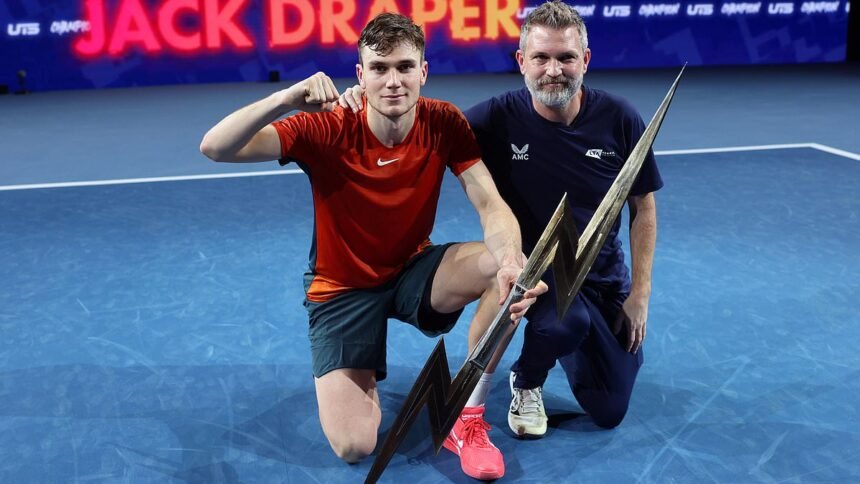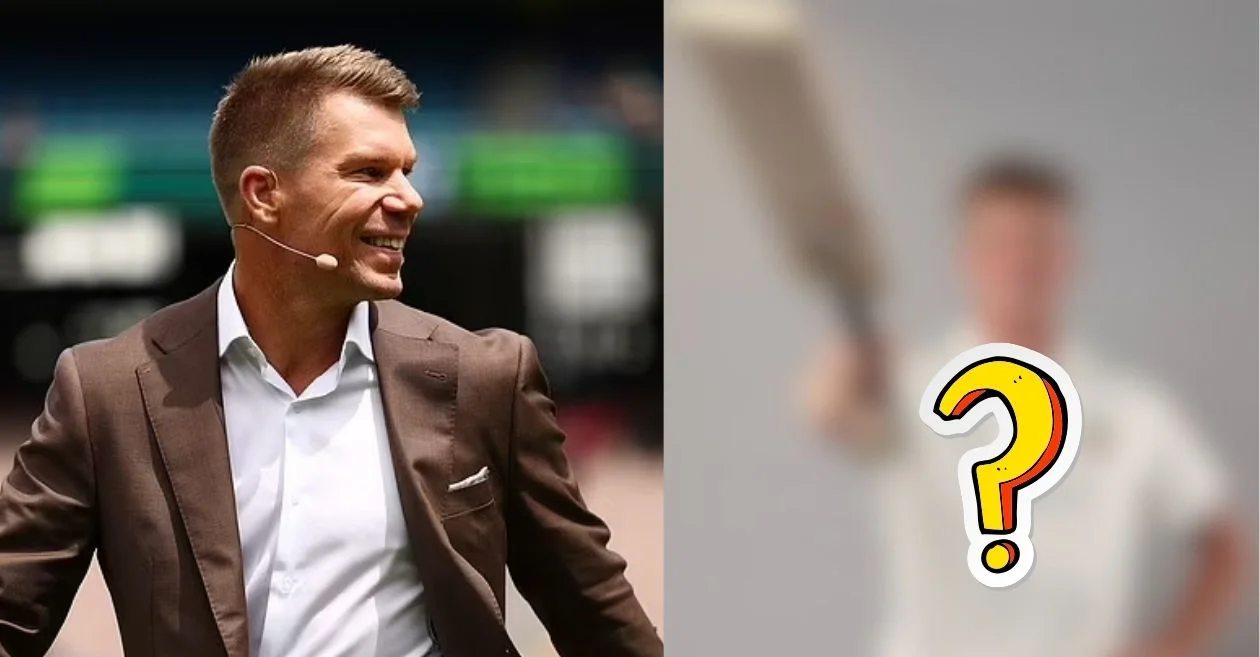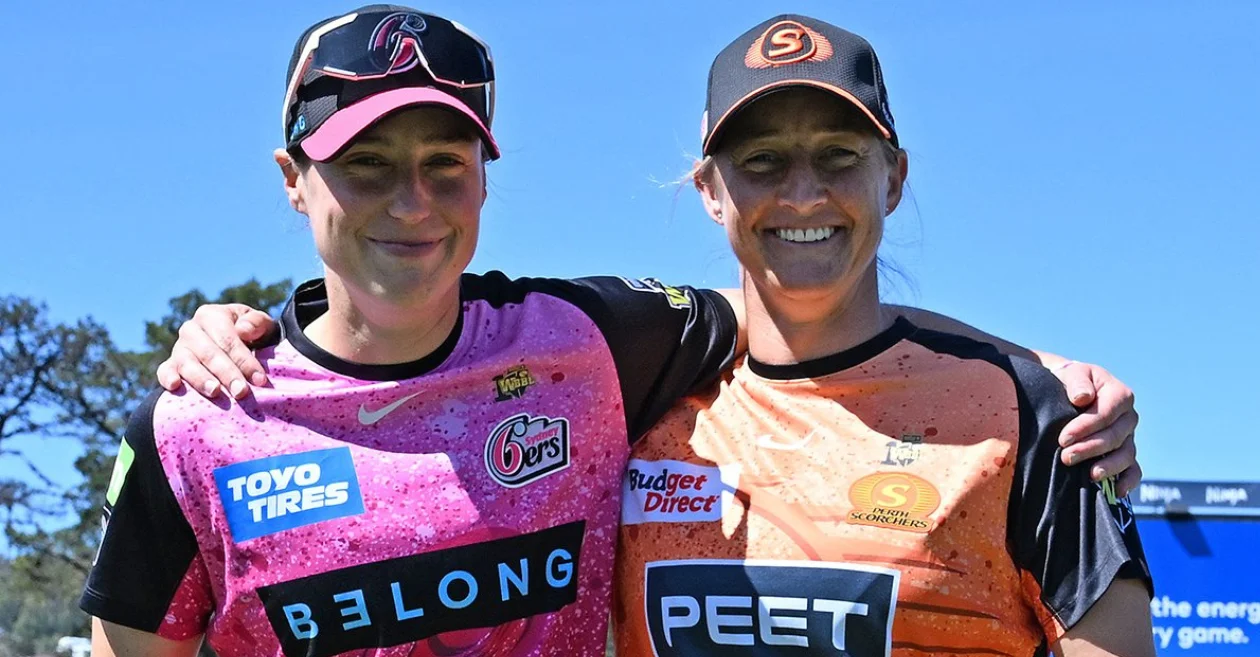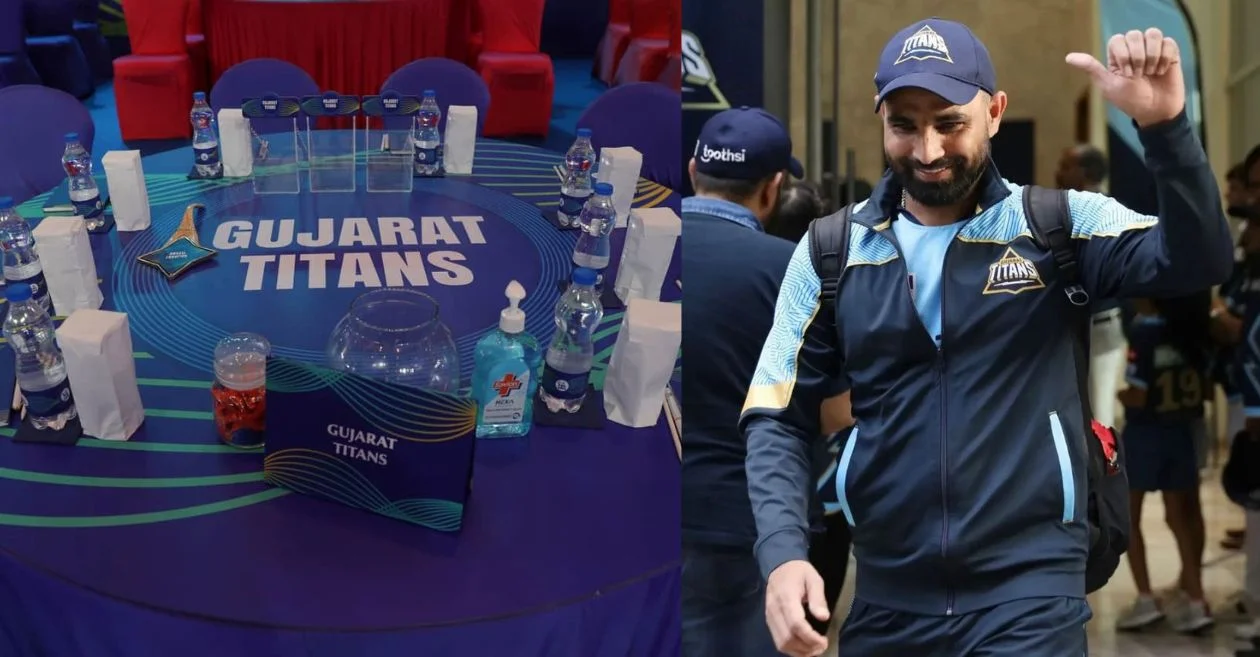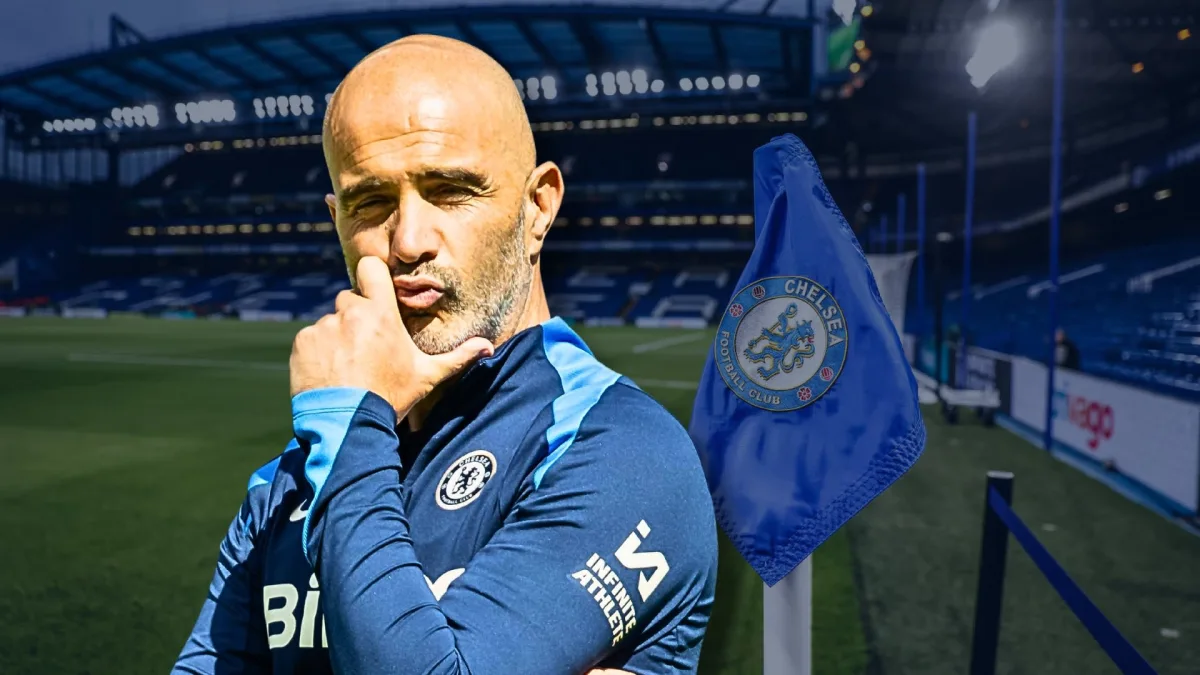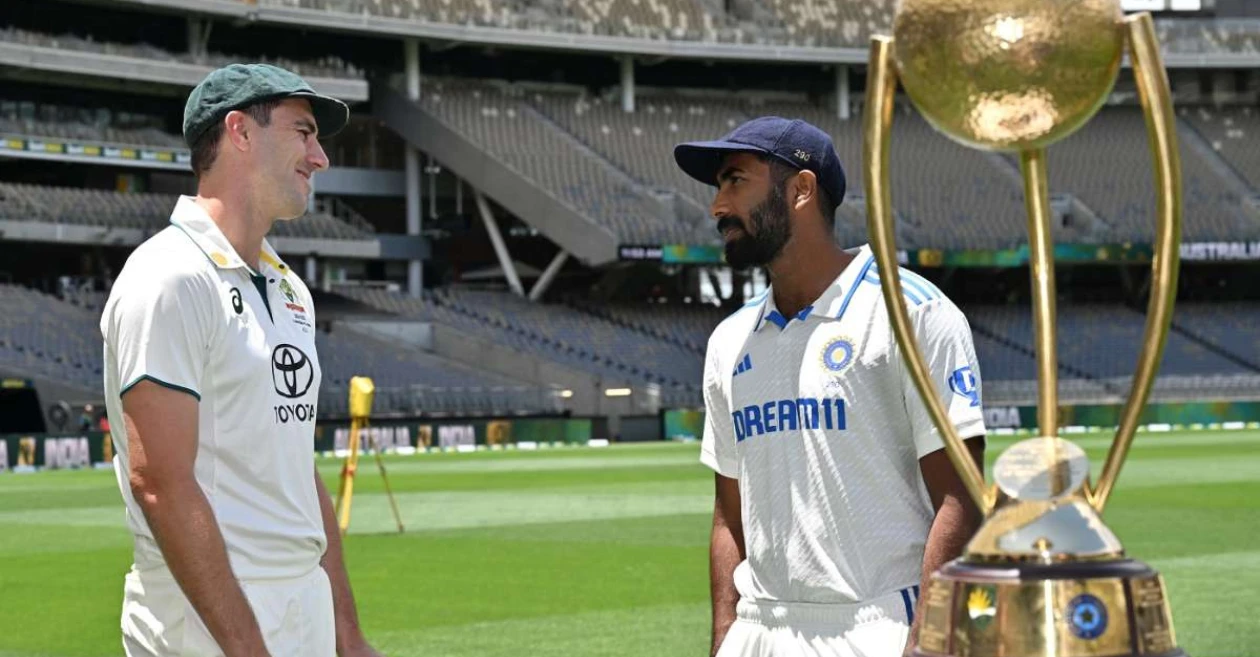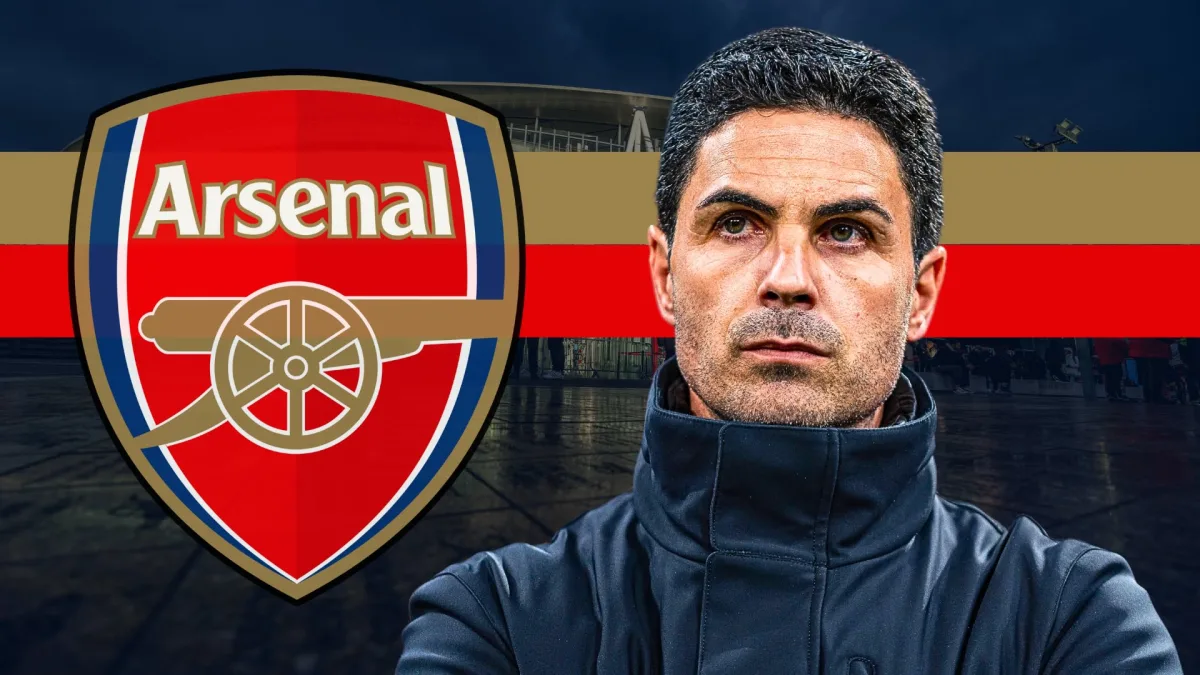Jack Draper and James Trotman are back in each other’s shoes. Before this week, the British No 1 and his coach had not spoken since they parted ways on the Eurostar platform in London at the beginning of this month.
They were heading home after the Paris Masters, which marked the end of the most seismic season of their lives.
‘You start to live in each other’s shoes too much,’ says Trotman, who has coached Draper for the last three years. ‘I’m trying to give him as much space as possible to do whatever he wants.’
Player and coach took some time to switch off from tennis – and each other. But switching off does not come easily to Trotman.
And so he spent almost an hour of his precious time off talking to Mail Sport – on his daughter’s birthday no less. It is a little like school holidays: pupils are off but teachers still have to plan their lessons and Trotman is plotting Draper’s pre-season, the details of which – including a week training with tennis’s new superstar – he reveals exclusively here.
‘The first four weeks we’ll be in London, then we’re going to train with Carlos Alcaraz for a week at Juan Carlos Ferrero’s academy (in Alicante),’ says Trotman.
James Trotman (right) has guided Jack Draper through the best season of his career to date

Draper is now the British No1 and has broken into the top 15 in the world rankings

He is not resting on his laurels and is set to train alongside Carlos Alcaraz in the off-season
‘It’s incredibly important to spend time with the best players in the world, experience that on a daily basis. We’re all really looking forward to it.’
What an opportunity for Draper to measure himself against the Wimbledon champion. It is a mark of respect, too, that Alcaraz wants a closer look at the man who soundly beat him at Queen’s this summer.
That win was a high point for the 22-year-old in a year of many. Trotman – who is an LTA coach seconded to Draper, rather than an employee of the British No 1 – has remained behind the scenes; the only time he came before the media was ahead of the US Open semi-finals, and even then he was cagey before the biggest match of Draper’s life.
But with the book closed on a transformational 2024 season, Trotman tells Mail Sport the story of how he has guided Draper from injury-prone kid to the No 15 player in the world.
‘Jack came on the scene in 2022 and got to a career-high ranking in the 30s,’ Trotman says from his house in Merton, near Wimbledon.
‘Everything was new, fresh and exciting. Then in 2023 he had three injuries. He didn’t play back-to-back tournaments from the Australian Open through to the US Open. That was a difficult time for Jack, a dark time. He looked at his career and realised how delicate it can be. That moment was important.’
The next turning point came this spring. In consecutive events Draper lost final-set tiebreaks to Nicolas Jarry (then world No 23) Hubert Hurkacz (No 8) and Taylor Fritz (No 15).
‘Those three losses were defining,’ says Trotman. ‘I sensed a shift in his desire and belief and the level he sees himself being able to play the sport.
‘Having those matches back-to-back was the best thing that happened to him. If those matches are spread out over 12 months, it doesn’t have the same impact.’
It was then that a penny which Trotman had been trying to bash into his student’s brain for months finally dropped. Draper was ready to embrace the kind of aggressive tennis a 6ft 4in hulk of a man should be playing.
‘It was that lightbulb moment for Jack to say, “OK, that’s enough. I’m OK to lose to these guys but I’m going to lose playing on my terms”,’ says Trotman.

It has not been a smooth ride to the top for Draper who lost three very close matches in a row last year that as his progress stuttered

Trotman (left) is adamant those losses were the ‘best thing that happened’ to Draper, with the Brit turning a corner ever since

‘These were conversations we’ve been having for the last 20 months about trying to play a certain way, but there was a reluctance (from Draper). Some of this stems from him being smaller as a child, having to defend a lot in his junior career. We didn’t want to lose that ability. It’s about defending when you have to, but not more than you need to.’
This period coincided with the much-feted addition to Draper’s team of former world No 6 Wayne Ferreira. The relationship only lasted three months – ‘it didn’t pan out in the end’, says Trotman – and Draper’s mentor admits to some frustration at how the media drew out that ‘supercoach’ narrative.
‘Wayne had an amazing career and did a great job coaching Frances Tiafoe – it was a story and it should be written about,’ says Trotman. ‘But I do think the media lingered on it for too long.’
Ferreira’s tenure coincided with an awful first-round defeat at the French Open for Draper and a below-par Wimbledon. Trotman says the addition of a new voice ‘probably disrupted Jack’s rhythm a little bit’ but the South African brought a similar message that Draper had to play more aggressively, and his added authority helped drive the point home.
Coaches have access to highly sophisticated data and, after our chat, Trotman sends some numbers to illustrate how Draper has become more assertive.
One statistic measures how often a player spends in attack, defence or neutral. The tour average in attack is 25 per cent. For Draper in 2023 that figure was 22 per cent; since the start of the grass season this year it has risen to 27 per cent.
Last year he hit his steadier backhand two per cent more than his dangerous forehand; that has flipped to a 10 per cent gap in the other direction.
‘These are subtle changes but a match often comes down to three or four points either way,’ says Trotman. ‘Small changes can make a huge difference.’
Trotman is a man for small changes and these have come in all areas for Draper this year.
‘Jack’s been more in tune with his diet,’ he says. ‘He wasn’t a bad eater but there was just more focus from Jack that it was something he wanted to do better, with more detail.’
As an example, Draper developed a taste for coffee and Trotman noticed a pattern: ‘Sometimes he had a bit too much caffeine and it can take away from performance.’ After Wimbledon, Trotman issued a decaf-only diktat and Draper has barely lost since.
Part of that run came at the US Open and culminated in a semi-final against Jannik Sinner, in which Draper decorated the Arthur Ashe court with vomit.

Draper had his best run at a major when he made the US Open semi-finals in September

Draper vomited on court in his semi-final defeat by Jannik Sinner as he suffered with nerves, and Trotman is now looking at minor tweaks that can take his charge to the next level
Draper put the nausea partially down to anxiety and Trotman admitted that is an area they are looking into as a team.
‘Jack was struggling,’ he says. ‘It was an extreme match. He had a few matches this year where he’s had this reflux thing. I don’t think there’s a player out there who doesn’t suffer some form of anxiety. It’s like anything – like trying to improve a serve or physical work. It’s our job to find solutions.’
Marginal gains has become a muddied concept but that seems to describe Trotman’s philosophy: ‘micro-changes’ as he calls them, applied to every area of Draper’s game and iterated over time to produce ‘vast improvements’.
Away from tennis, Trotman’s passion is modern art. He calls it ‘the one thing I have for myself, that release that gives me space to think about something else’.
If Trotman were an impressionist painter he would be a pointillist: a series of tiny spots on the canvas, hundreds of dots of adjustment and improvement that come together to form a masterpiece.


